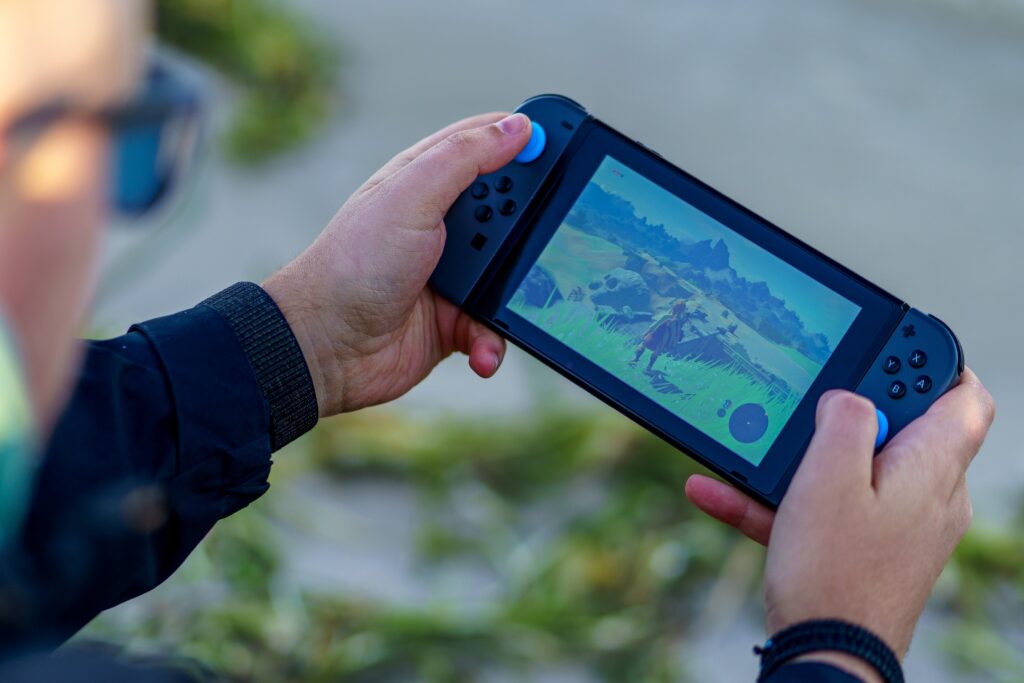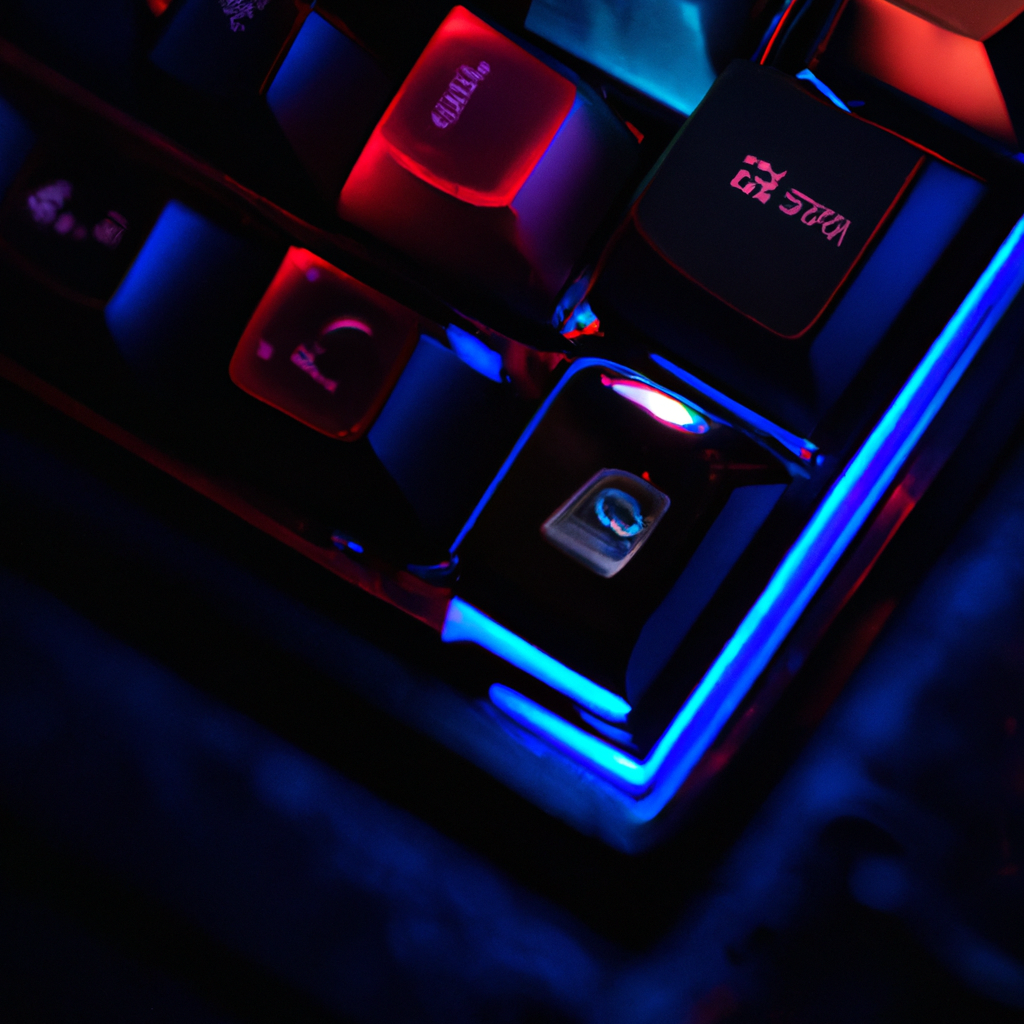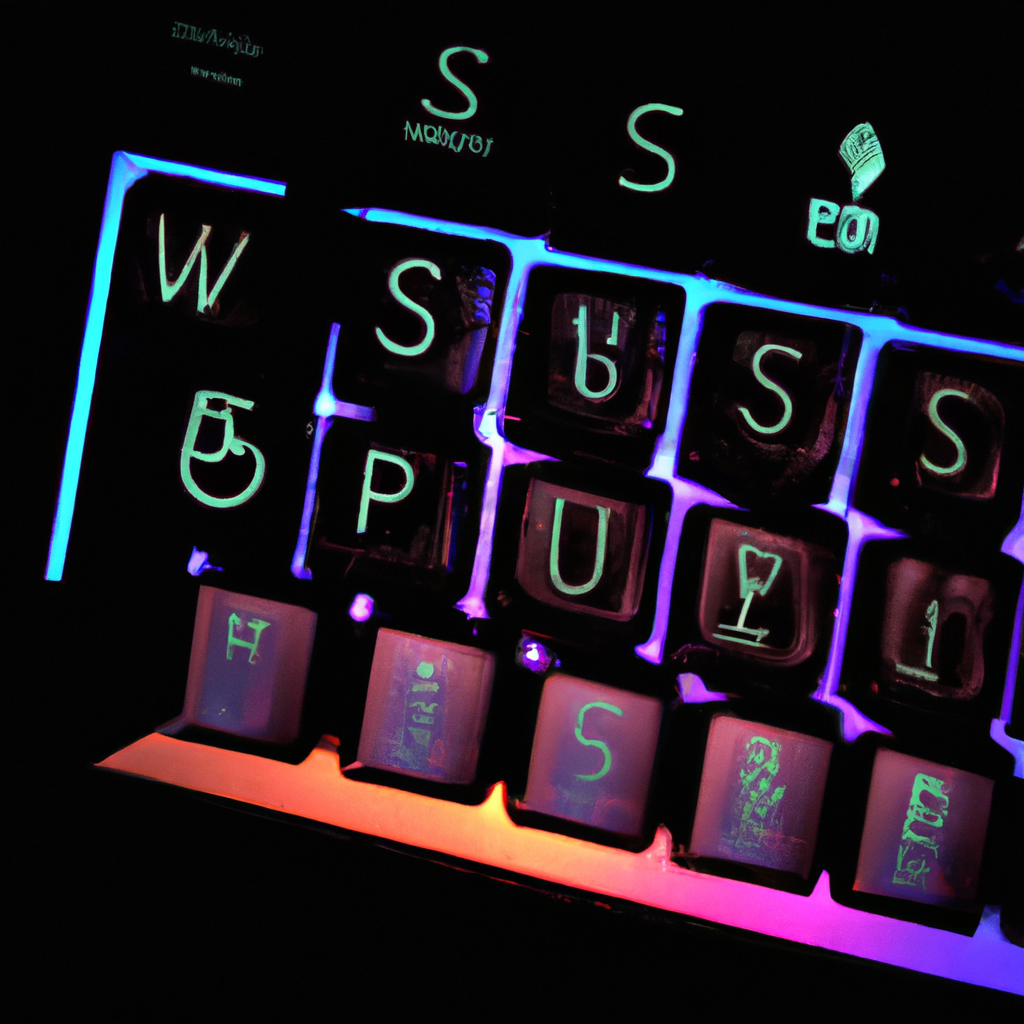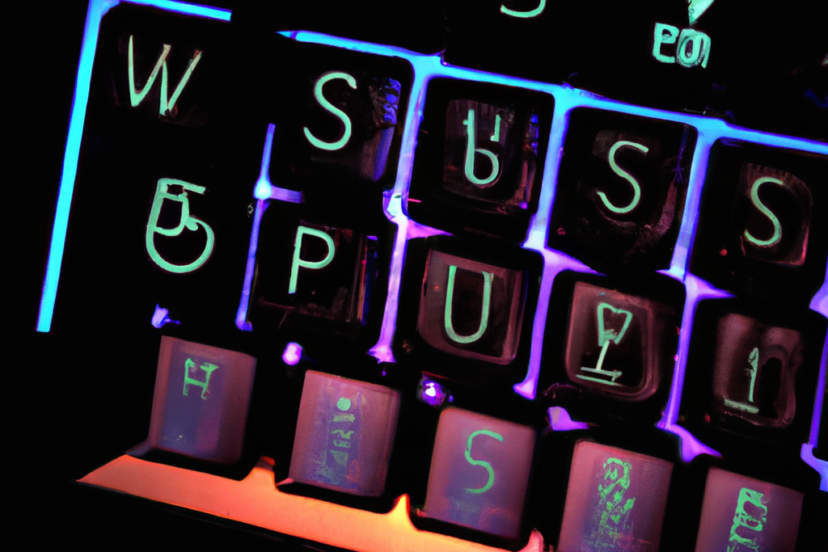What Is The Difference Between USB And PS/2 In Gaming Keyboards? 9 Powerful Ones To Start With
What Is The Difference Between USB And PS/2 In Gaming Keyboards: Introduction
In the world of gaming keyboards, the debate between USB and PS/2 connections has been a longstanding one. While both options offer their own unique advantages, what is the difference between USB and PS/2 in gaming keyboards? It’s important to understand the key differences and how they can impact your gaming experience.
From compatibility and responsiveness to anti-ghosting capabilities, this article will provide a comprehensive comparison of USB and PS/2 connections in gaming keyboards, helping you make an informed decision that suits your gaming needs. So, whether you’re a casual gamer or a competitive pro, read on to discover the nuances between USB and PS/2 and unlock the keyboard connection that’s perfect for you.
What is a USB Gaming Keyboard?
A USB gaming keyboard is a specialized computer input device designed primarily for gamers, offering enhanced features and performance compared to standard keyboards. It connects to a computer or gaming console via a Universal Serial Bus (USB) interface, providing both power and data transmission capabilities. USB gaming keyboards are tailored to meet the demands of gaming enthusiasts, delivering improved responsiveness, customizable features, and ergonomic designs to enhance the gaming experience.
Key Features of a USB Gaming Keyboard
- Mechanical Switches: Many USB gaming keyboards use mechanical key switches, which offer tactile feedback and faster response times than traditional membrane switches. Different types of mechanical switches cater to various preferences, such as clicky, tactile, or linear switches.
- RGB Lighting: A common feature in gaming keyboards is customizable RGB (Red, Green, Blue) backlighting. Users can personalize key illumination, create lighting effects, and synchronize lighting with in-game actions or other peripherals.
- Anti-Ghosting and N-Key Rollover: These features ensure that every keypress is registered accurately, even during rapid and simultaneous inputs. Anti-ghosting prevents unintended keypresses, while N-key rollover allows multiple key presses to be recognized simultaneously.
- Macro Programmability: USB gaming keyboards often come with dedicated macro keys or allow users to program custom macros. Macros are sequences of keypresses that can be executed with a single button press, useful for complex in-game actions or commands.
- Dedicated Gaming Mode: A gaming mode key can disable the Windows key or other keys that might interrupt gameplay accidentally. This feature prevents unwanted interruptions when immersed in a game.
- Media Controls: Integrated media controls (volume, play/pause, mute) are convenient for adjusting audio settings without leaving the game.
- Wrist Rest and Ergonomic Design: Some USB gaming keyboards include a detachable wrist rest or have an ergonomic design to reduce fatigue during long gaming sessions.
- Customization Software: Manufacturers often provide software for fine-tuning keyboard settings, creating macros, and customizing RGB lighting effects.
- USB Pass-Through Ports: Some gaming keyboards feature USB pass-through ports, allowing users to connect other peripherals or devices directly to the keyboard for easy access.
- Durability: Gaming keyboards are typically built to withstand heavy usage. They often feature reinforced keycaps and a robust frame to withstand the rigors of intense gaming.
What is a PS/2 Gaming Keyboard?
A PS/2 gaming keyboard, on the other hand, connects to a computer or compatible device via a PS/2 (Personal System/2) interface. This type of connection is less common today, as USB has largely replaced it for most peripherals. However, some older gaming keyboards and enthusiasts may still prefer PS/2 connections for specific reasons.
Key Features of a PS/2 Gaming Keyboard
- Legacy Interface: The PS/2 interface was a standard connector for keyboards and mice in older PCs. PS/2 connectors are round, and they transmit data using a serial protocol. Some gamers prefer PS/2 keyboards for their compatibility with older systems.
- No USB Polling Rate: PS/2 keyboards don’t rely on USB polling rates, which means they can potentially offer faster response times. This can be advantageous in competitive gaming, where milliseconds can make a difference.
- N-Key Rollover: Like USB gaming keyboards, PS/2 keyboards can support N-key rollover, allowing for simultaneous key presses without ghosting.
- Lower Power Consumption: PS/2 keyboards use less power than USB keyboards because they don’t require active electronics for USB communication. This can be beneficial for users concerned about power usage or those using older systems with limited power resources.
- Lack of Hot-Swapping: Unlike USB, PS/2 keyboards are not hot-swappable, meaning they must be connected or disconnected while the computer is off to avoid potential issues.
In summary, both USB and PS/2 gaming keyboards serve the gaming community, with USB being the more prevalent and versatile option today. USB gaming keyboards offer a wide range of features and customization options, while PS/2 keyboards may appeal to those with specific compatibility or response time requirements, especially in legacy systems. Ultimately, the choice between the two depends on individual preferences and system compatibility.
What is a USB Gaming Keyboard

1. Connection Type
When choosing a gaming keyboard, one of the key factors to consider is the connection type. There are two main options available: USB and PS/2. Each connection type has its own set of advantages and considerations, so let’s take a closer look at each one.
1.1 USB Connection
The USB (Universal Serial Bus) connection is the most widely used and recognized connection type for keyboards. It offers several benefits that make it a popular choice among gamers. One of the major advantages of USB is its compatibility with virtually all computers and laptops available today. Whether you’re using a Windows PC, Mac, or Linux system, you can be confident that your USB gaming keyboard will work seamlessly.
Another significant advantage of USB is its plug-and-play functionality. This means that you can simply plug the keyboard into a USB port, and it will be recognized and ready to use by your computer without the need for any additional software or drivers. This allows for a hassle-free setup and convenient use.
1.2 PS/2 Connection
The PS/2 (Personal System/2) connection, although not as commonly used as USB, has its own advantages in the realm of gaming keyboards. PS/2 is an older connection type that was originally introduced by IBM for its personal computers. Despite its age, PS/2 still finds its place among gamers due to some unique features it offers.
One significant advantage of the PS/2 connection is its ability to provide a faster and more reliable data transfer compared to USB. This is because the PS/2 connection uses a dedicated port specifically for keyboard input, whereas USB often shares its bandwidth with other devices. As a result, PS/2 can offer a more responsive and accurate gaming experience, particularly for games that require quick and precise keystrokes.
2. Compatibility
Compatibility is another crucial factor to consider when choosing between USB and PS/2 connections for your gaming keyboard. Let’s explore the compatibility of each connection type in detail.
2.1 USB Compatibility
USB keyboards have a significant advantage when it comes to compatibility. They are compatible with a wide range of devices, including desktop computers, laptops, gaming consoles, and even some smart TVs. This universality makes USB keyboards incredibly versatile, allowing you to easily switch between different devices without any compatibility concerns.
Furthermore, most modern operating systems natively support USB keyboards, eliminating the need for additional drivers or software installations. This means that whether you’re using Windows, macOS, or Linux, you can rely on USB keyboards to work seamlessly.
2.2 PS/2 Compatibility
While PS/2 keyboards may not offer the same level of universal compatibility as USB keyboards, they do have their own advantages in this regard. PS/2 keyboards are generally compatible with desktop computers and some older laptops. However, it’s important to note that PS/2 ports are becoming less common on modern computers, and many newer laptops no longer have a dedicated PS/2 port.
To use a PS/2 keyboard with a computer that lacks a dedicated PS/2 port, you would need to use a PS/2 to USB adapter. These adapters allow you to connect a PS/2 keyboard to a USB port, effectively making it compatible with a broader range of devices. However, it’s essential to ensure the compatibility of the specific adapter with both your keyboard and the device you intend to use it with.
3. Plug and Play
The convenience of plug-and-play functionality can greatly enhance the user experience when using a gaming keyboard. Let’s explore how both USB and PS/2 connections handle plug and play.
3.1 USB Plug and Play
USB keyboards are renowned for their plug-and-play functionality. This means that when you connect a USB keyboard to your computer, it is automatically recognized and configured without the need for any additional action on your part. With USB plug and play support, you can simply connect your keyboard, and you’re ready to start gaming immediately.
This convenience extends to the compatibility with various operating systems. Most modern operating systems, including Windows, macOS, and Linux, have built-in support for USB keyboards. As a result, you don’t need to worry about installing drivers or additional software to use your USB gaming keyboard.
3.2 PS/2 Plug and Play
PS/2 keyboards generally do not offer the same plug-and-play functionality as USB keyboards. Unlike USB, where you can simply connect the keyboard and start using it, PS/2 keyboards often require a reboot or system initialization to be recognized by the computer.
When using a PS/2 keyboard, it’s typically recommended to connect it before turning on your computer. This ensures that the keyboard is detected during the system’s initialization process. While this may not be as seamless as USB plug and play, it is still a straightforward process that doesn’t require any additional software installation.
4. Ghosting and N-Key Rollover
Ghosting and N-Key Rollover are important considerations for gamers, especially in fast-paced games that require multiple simultaneous key presses. Let’s delve into how USB and PS/2 connections handle these aspects.
4.1 USB Ghosting and N-Key Rollover
Ghosting refers to the phenomenon where a keyboard fails to register certain combinations of three or more simultaneous key presses. This can be problematic in games that require complex key combinations or rapid inputs. However, USB keyboards, especially those designed specifically for gaming, generally have excellent anti-ghosting capabilities.
USB keyboards with N-key rollover (NKRO) support offer the highest level of anti-ghosting. NKRO ensures that each key press is recognized and registered independently, regardless of how many other keys are pressed simultaneously. This enables gamers to execute complex maneuvers or combinations with precision and accuracy, without worrying about any missed inputs.
4.2 PS/2 Ghosting and N-Key Rollover
Similar to USB keyboards, PS/2 keyboards can also have anti-ghosting capabilities, but their performance may vary depending on the specific keyboard model. PS/2 keyboards typically offer at least partial anti-ghosting, allowing for multiple simultaneous key presses without any issues.
However, where PS/2 keyboards truly shine is in terms of N-key rollover. Unlike USB keyboards, which may have limitations in the number of simultaneous key presses they can handle, PS/2 keyboards with full N-key rollover can register an unlimited number of simultaneous key presses. This is due to the dedicated nature of the PS/2 connection, which provides a more direct and efficient communication pathway between the keyboard and the computer.

5. Polling Rate
The polling rate is an important aspect to consider when it comes to the responsiveness and accuracy of your gaming keyboard. Let’s explore how USB and PS/2 connections differ in terms of polling rate.
5.1 USB Polling Rate
The polling rate refers to how frequently the keyboard sends information or updates to the computer. USB keyboards typically have a higher polling rate compared to PS/2 keyboards. Most USB gaming keyboards offer polling rates ranging from 125Hz (sending updates every 8 milliseconds) to as high as 1000Hz (sending updates every 1 millisecond).
A higher polling rate translates to a more responsive keyboard, minimizing any delay between your key presses and the corresponding actions on the screen. This can be especially important in fast-paced games where split-second reactions are crucial.
5.2 PS/2 Polling Rate
PS/2 keyboards, on the other hand, have a fixed polling rate of 200Hz. While this polling rate is lower compared to high-end USB gaming keyboards, it is still more than sufficient for most gaming scenarios. PS/2 keyboards with a 200Hz polling rate ensure a responsive and lag-free gaming experience, with minimal input delay.
It’s worth noting that some high-end gaming keyboards may offer software customization options to adjust the polling rate, even for PS/2 connections. However, it’s important to ensure that your computer’s motherboard supports the desired polling rate, as not all motherboards can achieve the highest possible polling rates for PS/2 connections.
6. Latency
Latency, or input delay, is a critical factor in gaming, as even the slightest delay can significantly impact gameplay. Let’s explore how USB and PS/2 connections differ in terms of latency.
6.1 USB Latency
USB keyboards generally have a slightly higher latency compared to PS/2 keyboards. This is due to the additional processing that occurs within the USB controller before the keyboard input reaches the computer.
However, it’s important to note that the latency difference between USB and PS/2 keyboards is often negligible and may not be noticeable to the average gamer. The vast majority of USB gaming keyboards offer low latency performance that meets the demands of competitive gaming.
6.2 PS/2 Latency
PS/2 keyboards, thanks to their direct and dedicated connection, have lower latency compared to USB keyboards. The absence of additional processing within a USB controller allows for near-instantaneous transmission of keyboard inputs from the PS/2 connection to the computer.
While the latency advantage of PS/2 keyboards may be more noticeable in professional gaming scenarios where split-second reactions matter, it’s important to consider that the overall latency introduced by modern USB gaming keyboards is typically minimal and unlikely to significantly impact the gaming experience for the majority of users.

7. Power Consumption
Power consumption is an important consideration, particularly for gamers who often spend prolonged periods using their keyboards. Let’s explore how USB and PS/2 connections compare in terms of power consumption.
7.1 USB Power Consumption
USB keyboards rely on the power provided by the USB port they are connected to. The power consumption of USB keyboards depends on several factors, such as the keyboard’s design, lighting features, and additional USB ports for pass-through connectivity. However, the power draw of most USB keyboards is relatively low.
Modern USB keyboards often feature power-saving functionalities that can help optimize power consumption. For example, some keyboards may have adjustable backlighting brightness or automatic sleep modes to conserve energy when not in use. This can be particularly useful for gamers who want to minimize their overall power consumption.
7.2 PS/2 Power Consumption
PS/2 keyboards have the advantage of drawing power directly from the computer’s PS/2 port. Unlike USB keyboards, PS/2 keyboards do not require additional power sources, such as USB ports or batteries, to operate.
As a result, PS/2 keyboards have lower power consumption compared to USB keyboards. This can be especially beneficial for gaming sessions that extend over long periods, as it helps reduce overall power usage.
8. Hot-Swapping
Hot-swapping refers to the ability to connect and disconnect a device without needing to restart the computer. Let’s explore how USB and PS/2 connections differ in terms of hot-swapping capabilities.
8.1 USB Hot-Swapping
One of the significant advantages of USB keyboards is their hot-swapping capability. USB connections are designed to be hot-swappable, meaning you can connect or disconnect a USB keyboard at any time without having to restart your computer.
USB hot-swapping is particularly useful in situations where you might want to switch keyboards quickly or use different keyboards for different tasks. For example, you could easily use one USB keyboard for gaming and another for typing or productivity tasks without any fuss or interruptions.
8.2 PS/2 Hot-Swapping
PS/2 connections, unfortunately, do not support hot-swapping. Connecting or disconnecting a PS/2 keyboard while the computer is running can potentially damage the keyboard or the computer itself. To prevent any damage, it’s essential to connect or disconnect a PS/2 keyboard only when the computer is turned off or during a reboot.
This lack of hot-swapping capability can be seen as a minor inconvenience for some gamers. However, for those who primarily use a single keyboard and do not need to switch between different keyboards frequently, this may not be a significant concern.

9. Durability
Durability is an important factor to consider, especially for gamers who rely heavily on their keyboards. Let’s explore how USB and PS/2 connections differ in terms of durability.
9.1 USB Durability
USB keyboards, particularly those designed for gaming, are generally built to withstand heavy use and provide long-lasting durability. Manufacturers often use high-quality materials and construction techniques to ensure their keyboards can withstand the demands of competitive gaming.
Additionally, USB keyboards may incorporate features like reinforced cables, spill-resistant designs, and mechanical key switches that offer enhanced durability and longevity. These features help protect your keyboard from accidental damage and ensure it remains in optimal condition over extended periods of use.
9.2 PS/2 Durability
Similar to USB keyboards, PS/2 keyboards are built to withstand frequent use. While PS/2 keyboards may not have the same level of enhancements or features as some USB gaming keyboards, they still offer a reliable and durable option.
The absence of additional electronic components within the PS/2 connection can contribute to the overall durability of PS/2 keyboards. Since the connection is simpler, there are fewer points of failure compared to USB keyboards that rely on more complex electronic components.
What Is The Difference Between USB And PS/2 In Gaming Keyboards: Conclusion
In conclusion, both USB and PS/2 connections have their own set of advantages and considerations when it comes to gaming keyboards. USB keyboards offer universal compatibility, plug-and-play functionality, and a wide range of customization options. They are an excellent choice for most gamers due to their convenience, responsiveness, and compatibility with modern devices.
On the other hand, PS/2 keyboards provide advantages in terms of responsiveness, N-key rollover, and lower latency. While they may not offer the same level of universal compatibility, they excel in situations where precise and rapid keystrokes are crucial.
Ultimately, the choice between USB and PS/2 connections for your gaming keyboard depends on your specific needs and preferences. Consider factors such as the games you play, the level of customization you desire, and the devices you intend to use. Whether you opt for USB or PS/2, choosing a high-quality keyboard from a reputable manufacturer will ensure an enjoyable and responsive gaming experience.





